High Peaks Pure Earth has translated a blogpost by Woeser that was originally written for broadcast on Radio Free Asia on December 1, 2010 and posted on her blog on December 14, 2010.
Although written after her return to Beijing, this blogpost is a continuation of her reflections on Lhasa after her trip there. Read Woeser’s previous blogpost “Returning to Lhasa to Witness the Current Situation” here.

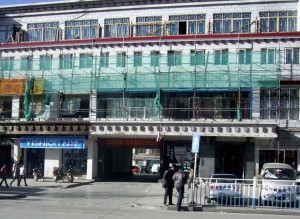
Lhasa is in the process of being “dressed up”
Who are these security notices, written in Chinese, written for?
Lhasa, after the “dressing up”
Photos taken by Woeser, February-April 2010 and October-November 2010.
Over two months ago, Lhasa held a mobilisation meeting about the reconstruction of Lhasa’s famous streets. An official of the Autonomous Region vehemently expressed that the major construction affecting 17 streets in the city centre must be completed by next year.
This so-called “street reconstruction” refers to the ever increasing phenomenon in contemporary China of “dressing up”. In Guangzhou, for example, because of the recent Asian Games, the city underwent comprehensive “dressing up”; society was highly critical of this as the funny images on the internet making fun of the Guangzhou Asian Games reveal: “windows were merely painted on and balconies were just soap bubbles. The city was ‘dressed up’ with paper”. A few months before, it was Shanghai that was one large construction site because of the Expo. All those living under current Chinese conditions know that regardless of whether it is the Olympics, the Expo, or the Asian Games, it is just a national image construction project. Following the blotting out of sky and earth, there are also always numerous local “political achievement” construction projects and the enthusiasm and warmth of the officials would suddenly run high, glossing over the fact that a large amount of the people’s blood, sweat and tears have gone straight into their private pockets.
As for Tibet, the “60th Anniversary of Peaceful liberation” is approaching next year. According to reports, 72 large celebration events are planned in the region; the invested amount of money amounts to as much as 2.526 billion Yuan. In the city of Lhasa alone, 27 celebration events are planned, which includes the process of “dressing up” that has already started. The invested amount of money is 1.094 billion Yuan, an enormous sum.
The “dressing up” process in Lhasa started in 2004 with work carried out on Yuthok Road and Khar Nga Dhong Road. I still remember that one night when I saw a group of Tibetans from the countryside carrying lots of gear on their backs pacing back and forth on the brightly lit Yuthok Street, looking worn out and anxious. Upon my inquiring, I found out that they had just come over from Shigatse on pilgrimage. They had found monasteries but they hadn’t found anywhere to stay. In the past, Lhasa used to be home to many camp sites where pilgrims could stay but in today’s times of modernisation, they cannot sleep in tents anymore, and they can even less sleep in the streets. So they asked where they could find inexpensive accommodation and the cheapest places I could think of were either the guesthouse behind the bus station or the station’s waiting room. So off they went, a group of bewildered looking Tibetans, in the resplendent streetlight, they slowly disappeared into the distance. On the other side of road, there was the government of the Autonomous Region of Tibet.
Don’t think that “dressing up” turns waste into something valuable; the image of Lhasa and Tibet is not created by applying Tibetan “make up”. Just like the famous Tibetan author Derong Tsering Dondrup wrote in an article about tourism and ethnic culture: “Ngari, U-Tsang, Amdo, Kham, as well as the Tibetan countryside and pastoral regions all have their own distinctive architectural styles’yet, we still spend tremendous amounts of money in the quest for urbanisation and modernisation. We even spend much money on dressing up, thus creating a grotesque concoction of ‘other nationalities dressing in Tibetan clothes’. In the near future, the Tibetan regions should rather draw on local materials and employ local craftsmen and designers who have knowledge of our own architecture.”
Ever since the 1950s, starting from the military camp like housing blocks, to the ceramic tiles and blue glass of the “Great Western Development Program”, all the way to the forceful process of “dressing up”, Lhasa’s fengshui has been imperceptibly influenced and irreversibly damaged. And what do these flourishing substitutes proof? Even if they reveal the dazzlingly beautiful “Tibetan characteristics”, one simple look is sufficient to know that it is all fake; just like a person who has grown up eating rice does not need to pretend to eat tsampa, he just doesn’t have that innate quality. You can’t even trick the tourists coming to Lhasa with this, as one traveller said: “this is nothing but dressing up reinforced concrete; it is a bit like those people around Potala Palace Square dressed in Tibetan clothes taking photos with foreign tourists, even if they wore the most authentic Tibetan dress, they would never convey that true graceful spirit.”
Particularly unduly is the fact that after so many years of “dressing up”, the facades facing the streets all look new and shiny, but those facing the back are all dilapidated. In other words, the outside is “dressed up” and looks neat and beautiful, whereas the inside reveals an old appearance of the past with rubbish covering potholed roads. For Lhasa people who are already used to the fact that their own roads will always be “next year’s roads”, the endless talks on television news about “improving living conditions” and “protecting local culture” are not only full of irony but also cause mental grievances. Just like it was put forward in a comment, “this mental grievance is not merely referring to an abstract idea of maintaining cultural traditions, it is much more referring to the disintegration of people’s living environments and real living conditions, which needs to be strongly resisted.”
Beijing, December 1, 2010

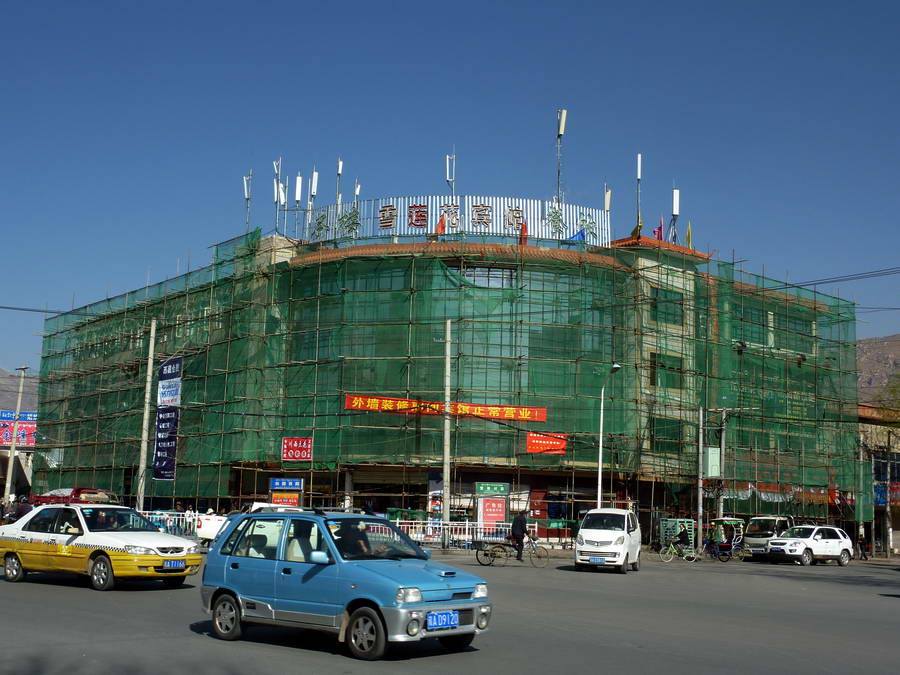

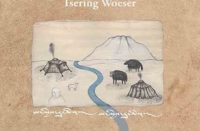
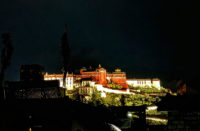
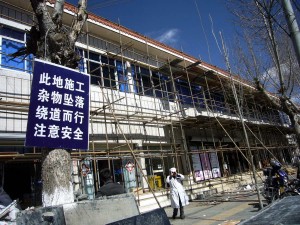
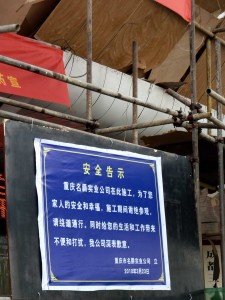
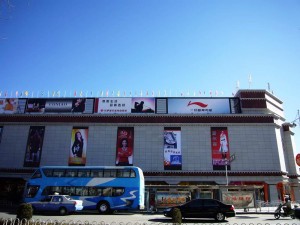
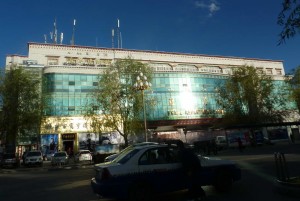
Follow Us!